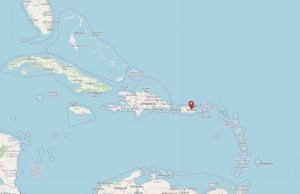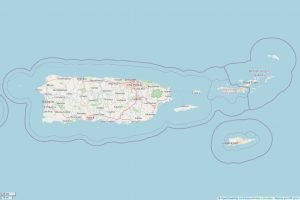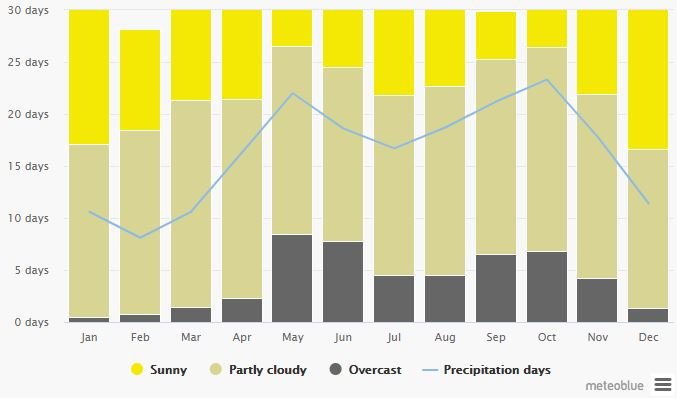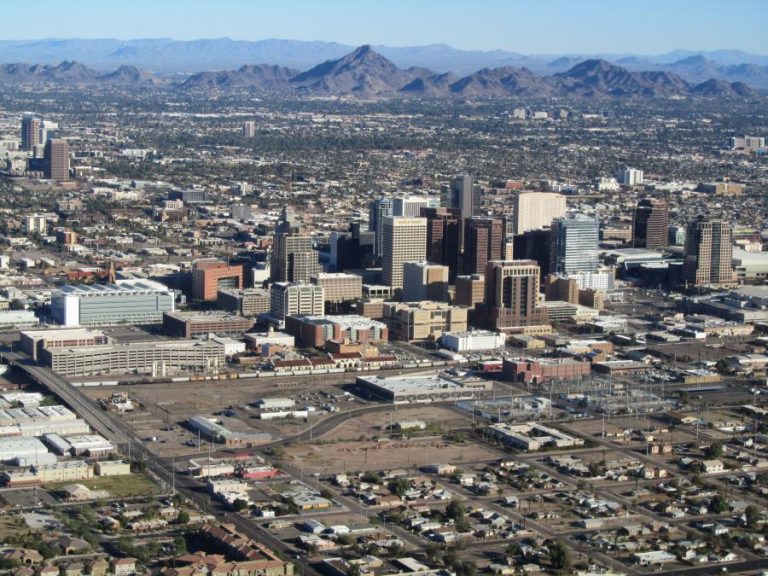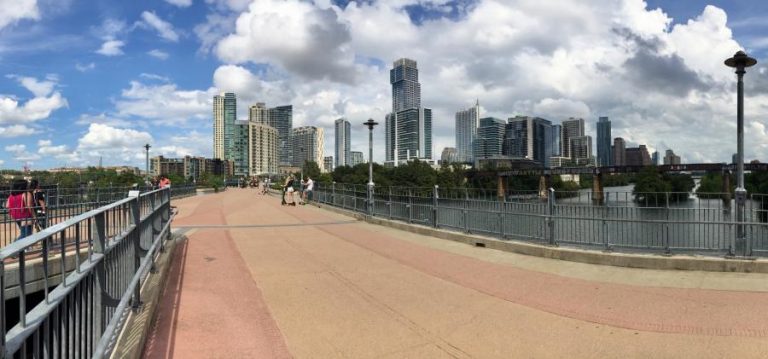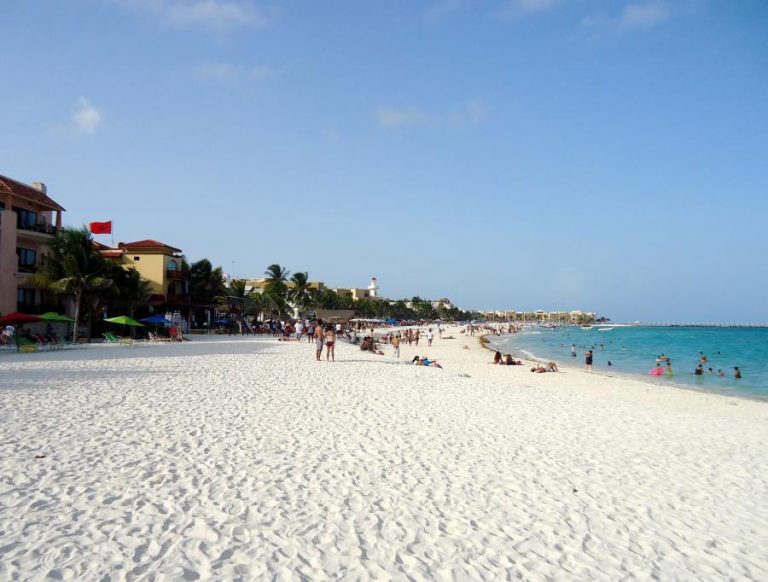Spend your fall, winter, or spring in Puerto Rico: is Puerto Rico a good snowbird location?
Puerto Rico, officially known as the Commonwealth of Puerto Rico (Estado Libre Asociado de Puerto Rico), is an unincorporated territory of the United States, located in the northeastern Caribbean, east of the Dominican Republic and west of both the U.S. Virgin Islands and the British Virgin Islands. Puerto Rico is only 100 Miles (161 km) long by 35 Miles (56 km) wide, making it the smallest island of the Greater Antilles.
Puerto Rico (Spanish for "rich port") consists of an archipelago that includes the main island of Puerto Rico and several islands: Vieques, Culebra, Mona, and numerous islets.
Puerto Rico is home to one cultural site on the UNESCO World Heritage List, La Fortaleza and San Juan National Historic Site in Old San Juan.
Seen as the gateway to the Caribbean, Puerto Rico's rich heritage blending Spanish and African cultures gives the island a personality unlike anywhere else. The cruise destination continues to entice snowbirds into staying longer to soak up more of the island's white-sand beaches and thriving food scene.
There are 3.3 million people living in Puerto Rico, and most of the population lives in the capital city, San Juan, and other larger towns, which are made up of different cultures and social classes. Top Cities to Visit in Puerto Rico are:
- San Juan
- Ponce
- Caguas
- Mayagüez
- Bayamón
- Carolina
- Arecibo
- Guaynabo
- Cayey
- Aguadilla
- Fajardo

Contents
- 1 Why should people visit during the fall, winter, or spring?
- 2 Climate
- 3 Safety
- 4 Communication, Internet, and cellphone in Puerto Rico
- 5 Snowbird locations in Puerto Rico
- 6 Things to see in Puerto Rico
- 7 Activities in Puerto Rico during winter
- 8 Shopping + Restaurants. Are they open in the fall, winter, or spring?
- 9 Transport
- 10 Health
- 11 Accommodation
- 12 Motorhomes/RV/Campers parks in Puerto Rico
- 13 Packing List
Why should people visit during the fall, winter, or spring?
While Puerto Rico's weather is warm year-round, snowbirds will skip a lot of the rain and humidity during the winter months from November through April. Temperatures aren't as high, but the sun is still out so a tan is guaranteed. Caribbean nights also get a bit cooler. Puerto Ricans are known for their warm hospitality, often considered very friendly and expressive to strangers.
Climate
The climate of Puerto Rico is tropical, hot all year round, with a hot and muggy season from May to October and a relatively cool season from December to March, with November and April as intermediate months.
As regards to the rains, the hot and muggy period from May to October tends to be rainy everywhere, while in the first months when the north-east trade winds blow (November and December, and partly January), the rains are still abundant on the slopes facing north and east.
In general, the coolest and least rainy period in Puerto Rico runs from December to March, which is also outside of the hurricane season; Making it the best period for snowbirds to visit. The average temperature is 80°C (176°F). The winter period normally does not see hurricanes (the hurricane season is from June to November).

For more climate information visit Meteoblue
Safety
Puerto Rico is a safe place to visit, however, there is a risk of natural disasters – such as earthquakes and hurricanes. The Puerto Rican government has however put a lot of resources into tourism initiatives to encourage snowbirds to visit the island nation. This work assists in recovering the country's economy, as tourism is the number one source of employment for locals.
Snowbirds should be on the lookout for petty crime, such as pickpocketing or robbery. Don't leave your valuables or belongings unattended and only take what you need out with you. Another hot tip: Don't do drugs. Drugs are a major problem here. That said, Puerto Rico has a lower crime rate than many major US cities.
Communication, Internet, and cellphone in Puerto Rico
Both Spanish and English are the official languages of Puerto Rico, but Spanish is without a doubt the dominant language, as the majority of the people in Puerto Rico are not proficient in English. Fewer than 20 percent of Puerto Ricans speak English fluently.
Puerto Ricans tend to stand close to those with whom they are speaking. This can happen during formal and informal conversations. Moving away from a person during a conversation could be seen as rude or disrespectful. A warm and friendly handshake is the customary form of greeting, but often a nod of the head is sufficient. Men who are close friends will embrace, and women friends will engage in a brief hug and a kiss on the cheek. Snowbirds should also remember to address people by a title, such as Señor, Señora, Professor, and Doctor when first introduced or informal situations.
Check your own carrier about the roaming cost for Puerto Rico. Depending on your plan roaming can be very expensive, and in those cases, we advise winter visitors to purchase a local Sim card.
Snowbird locations in Puerto Rico
- San Juan: it is a beautiful, safe, vibrant, and one of the best places to stay in Puerto Rico. The neighborhood of Old San Juan, on the northmost tip of the city, is full of history: ancient forts, monuments, museums, and colorful historic houses.
- Rincon: The town's two nicknames–Pueblo del Surfing (surfing town) and El Pueblo de los Bellos Atardeceres (the town of beautiful sunsets) are only two of reasons why Rincon is an excellent (and beautiful) place to stay.
- The neighborhood of Santurce: just outside of Old San Juan, bursts with art and culture. Locals say that Santurce's photo-worthy street murals and electric nightlife make it one of the coolest places to go in Puerto Rico–and Santurce easily one of the top options for places to stay.
- Vieques: This is an awesome place to stay if one wants to hang out with friendly wild horses, explore black-sand beaches, and enjoy all the benefits of island life and, conveniently, Vieques has some great hostel options.
- Culebra: is a great place to stay especially for snowbirds looking for beachy things to do in Puerto Rico.
Things to see in Puerto Rico
Puerto Rico has notable places that are worthwhile visiting:
- Architecture: Puerto Rico's architecture is a diverse mixture of different cultural and artistic influences, reflective of the island's history. Snowbirds will find Spanish Colonial, Gothic, Neoclassical, and Baroque architecture styles in close proximity to each other. The most notable of these include El Morro Fortress, San Cristobal Fortress, the San Juan Cathedral, and the Dominican Convent.
- Arts & crafts: There is a strong artistic presence among Puerto Ricans, whether from artists formally trained in art schools, or self-taught amateurs. Snowbirds interested in Puerto Rican art can go to the Institute of Puerto Rican Culture in the Dominican Convent in Old San Juan. It is the best source of information on the island about Puerto Rican arts and crafts. Another good place to see Puerto Rican art is the Museum of the University of Puerto Rico in Río Piedras
- The Beaches: These places are best for beaches in Puerto Rico- Combate Beach, Flamenco Beach, Seven Seas Beach, Sandy Beach, and Crashboat Beach amongst others.
- Nature & Parks: National Forest System and El Yunque (which is home to 26 animal species that isn't found anywhere else in the world) as well as the picture-perfect La Mina waterfalls.
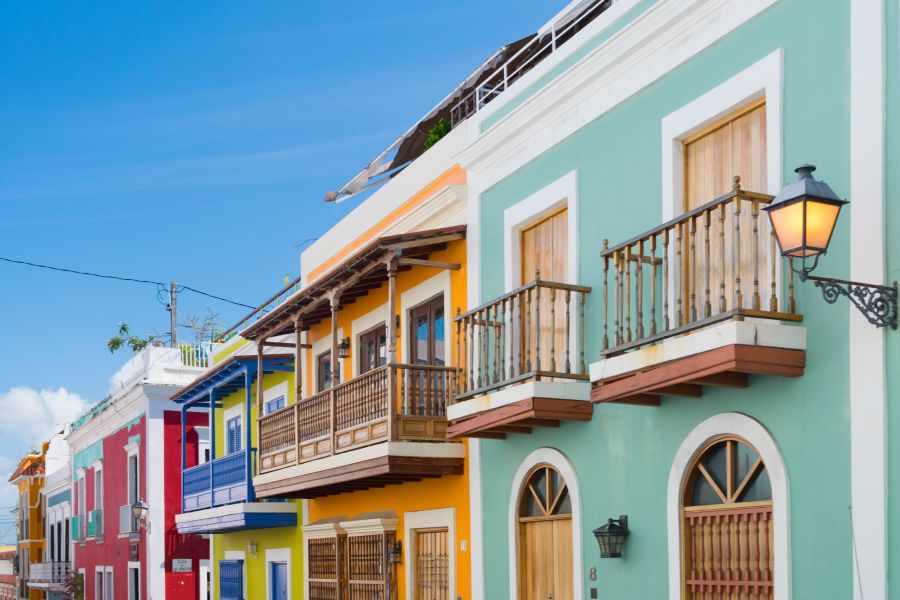
Activities in Puerto Rico during winter
- Visit the different cities
- A day's tour to the parks
- Take strolls on the beach
- Explore the beautiful architectural buildings
- Try eating the local cuisines
- Catch a ferry and visit Flamenco Beach on Culebra or
- Head to Mosquito Bay on Vieques
- Learn some basic Spanish to make the trip just a bit easier
- Attend the following events:
- Ciudad Encantada en Navidad – November/December. It takes place in the Tablado del Rio parking lot.
- Dia de los Inocentes – December
- Festival Comunitario de la Iglesia Católica – December
- Certamen de Aguinaldo – January
- Dia de los Reyes – January
- Three Kings Day is the traditional gift-giving holiday on the island, commemorates the day that the three Wise Men brought gifts to the Christ child. In La Fortaleza the governor honors the tradition by handing out gifts to island children.
- Festival de Bellas Artes – January in Anasco
- Festival de la Calle de San Sebastian – January. This festival sponsored by the Institute for Puerto Rican Culture takes place in San Sebastian street for three days, celebrating Puerto Rican culture with a full program of parades, folkloric dances, music, food, and crafts.
Shopping + Restaurants. Are they open in the fall, winter, or spring?
Puerto Rico's shops and boutiques have a variety of things to buy. Cigars, ice cream, must-haves for the beach, handicrafts, vintage clothes, antiques, housewares. Major shops include The/Uncharted/Studio, Frankie Vintage, Concalma, Everything but Match Concept Store, El Galpon, Jewelry Merchants on Plaza Colón, Shopping Old San Juan.
The local markets offer a great local taste of the different towns to be found in Puerto Rico, and the opportunity to pick up some handy essentials too. Some of the best markets in Puerto Rico include Plaza del Mercado de Rio Piedras, Plaza del Mercado de Santurce, Aguadilla Farmers Market, Old San Juan Farmer's Market, Arecibo Flea Market.
Snowbirds who are hungry and excited about discovering new foods will be happy to learn that Puerto Rican cuisine promises to satisfy their taste buds with a unique tasty blend of Spanish, African, Taino, and American influences that can be traced back to the Arawaks and Tainos.
There are some Puerto Rican foods that snowbirds just must-try during the winter. They will have the chance to sample local specialties like lechón asado (roasted pork), pollo guisado (chicken stew with potatoes and green olives), and pasteles (mashed green bananas stuffed with meat and wrapped in banana leaves). They can also try the coconut-based coquito, the Puerto Rican version of eggnog, at almost any bar they visit. Regardless of taste or budget, snowbirds will find a wide range of delightful places to dine and drink in Puerto Rico. Some of the best places to experience cultural meals are Punto de Vista Restaurant & Bar, Ali Baba Restaurant, Cafe Cola'o, Oceano, and Cafe Don Ruiz amongst others.
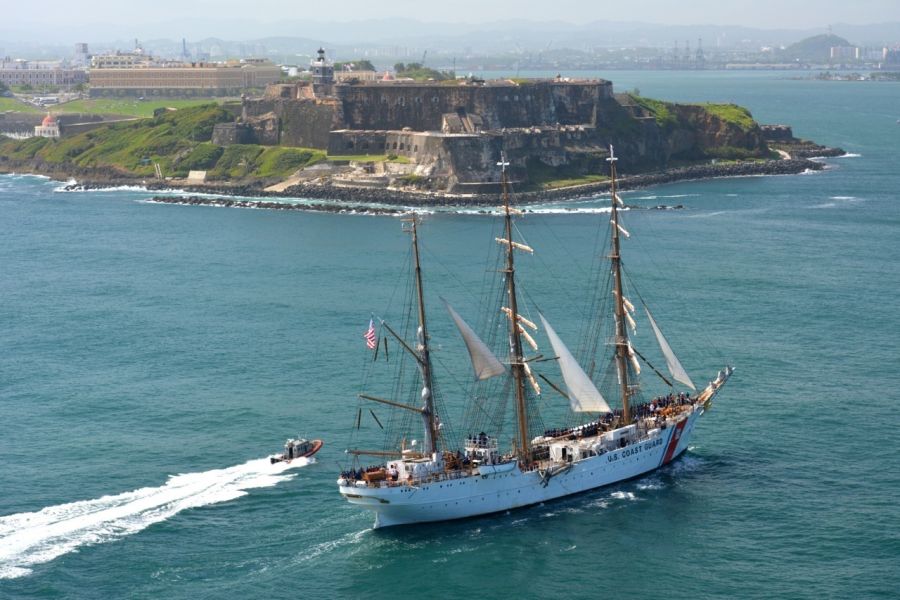
Transport
There are many options for getting around in Puerto Rico. Numerous flights connect various airports around the island, including Culebra and Vieques. There's a ferry service from San Juan to various nearby destinations, and from Fajardo to Vieques and Culebra. Throw in the train, bus, taxis, and públicos, and you won't have any problem reaching your destination or simply getting out and exploring what Puerto Rico has to offer.
- By Taxi: From the airport, snowbirds should look for the Taxi Turístico, which carries the signature garita (sentry box) icon as their logo. They can also be found at designated taxi stands at various points in San Juan (including at Plaza de Armas and steps away from Plaza Colón). Taxis can be expensive, with rates from the airport to Condado, Old San Juan, and Isla Verde starting at $15 (approx. €14, £12, $20 CAD, $23 AUD).
- By Público: A público is a privately operated shuttle service that transports people all over the island. This is a great option if snowbirds have got time on their hands (a cross-island trip can easily run several hours long with multiple stops), want to see small, local towns along the way, and enjoy mingling with blue-collar locals.
- By Bus: Puerto Rico's public buses are referred to as guaguas. Tourists in San Juan will be most interested in two lines: the A5, which travels from Old San Juan to Isla Verde, and the B21, which runs between Old San Juan, Condado, and the Plaza Las Américas Mall in Hato Rey. The Department of Transportation also runs an efficient Metrobus, which has the most extensive network in the city.
- By Car Rental: Virtually, every car rental company has a presence in Puerto Rico, along with several local companies. A partial list includes Avis, Budget, Charlie Car Rental (the largest local agency on the island), Hertz, National Car Rental, Thrift, Maritza's Car Rental and Carlos Jeep Rental.
- By Train: Train travel between cities doesn't exist, but snowbirds can get around metropolitan San Juan through the Tren Urbano (Urban Train), which is primarily a commuter train connecting residential and commercial points in the capital. As such, the Tren Urbano doesn't reach Old San Juan.
- By Ferry: Puerto Rico has decent and very cheap ferry service. From Old San Juan, snowbirds can catch a ferry to Cataño (which is the cheapest way to get to the Bacardi distillery) or to Hato Rey (the banking district and the site of Plaza Las Américas.
- By Plane: The quickest and most effective way to travel across the island or to Vieques and Culebra is via a small plane. Several charter services and local airlines operate from San Juan's international Luis Muñoz Marín Airport in Isla Verde or its smaller local Isla Grande Airport in Miramar. Among the airlines, you'll find here are Air Flamenco, Vieques Air Link, and Cape Air.
Health
Healthcare in Puerto Rico is of a high standard, but conditions do vary throughout the island. The standard of healthcare is similar to what one would expect in the US, but some areas are better equipped than others. While medical professionals in Puerto Rico are highly knowledgeable, there is a pronounced shortage of doctors due to the underfunding of public healthcare. Many move over to the US in search of better pay. The island is home to dozens of hospitals, not to mention clinics and pharmacies. There are also several hospitals and other healthcare facilities in San Juan that have medical staff on-site around the clock.
Public healthcare in Puerto Rico is managed under a government-run program. This program provides medical and healthcare services by means of contracting private health insurance companies. The quality of public healthcare is generally good, but due to the shortage of doctors, ex-pats should expect long waiting times even if they've made an appointment in advance. Most snowbirds opt for private healthcare.
Snowbirds can expect private healthcare in Puerto Rico to be of a high standard with shorter waiting times. Healthcare providers aren't always able to accept payments by card so it's a good idea to make it a habit to bring along some cash when going to the doctor.
Health hazards in Puerto Rico- There are no major health risks associated with Puerto Rico. Tap water is considered clean and safe to drink.
Routine vaccinations, such as those for measles, polio, tetanus, and others, should be kept up to date but there are no specific vaccinations required to enter Puerto Rico. In a medical emergency, call 911. Many operators will speak Spanish when answering a call but transfer to an English speaker is usually possible. Ambulances are run by private companies and require payment upfront. Health insurance may cover this but it's always best to confirm this ahead of time in case there is a future emergency.
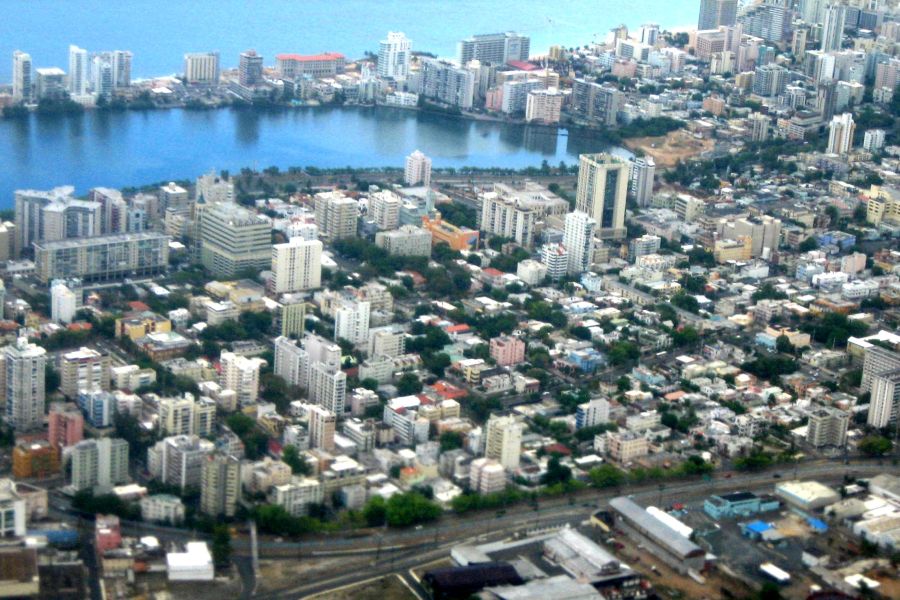
Accommodation
There are a fair number of resorts, hotels, short-let apartments available for rent in Puerto Rico. The houses are usually well equipped with basic amenities and furnished. Accommodation prices range from $34 (approx. €31, £27, $46 CAD, $52 AUD) per night.
Motorhomes/RV/Campers parks in Puerto Rico
For such a small island, Puerto Rico is packed full of exciting adventures and sights. The island has many opportunities for the snow to camp in varied settings, from coastline to dry forest to mountains. Here are a few of the campgrounds to consider:
The price for camping is $10 (approx. €9, £8, $13 CAD, $15 AUD) per day.
- Parque Nacional Balneario Seven Seas
- Punta Maracayo Camping Center
- Sun Bay Campground
- Parque Nacional Tres Hermanos, coastline of Anasco
- El Yunque National Rainforest
Packing List
- Weather: The fall, winter, and spring weather in Puerto Rico will normally be hot during the day and hot/warm during the night. Of course in the fall and spring it will be warmer than in the winter. You have to pack accordingly.
Other locations close to this location:
If you see this after your page is loaded completely, leafletJS files are missing.
If you have any additions, or comments on the content on this page, please use our contact form to let us know.
Detailed weather during the year for Puerto Rico
- Weather in Puerto Rico for January
- Weather in Puerto Rico for February
- Weather in Puerto Rico for March
- Weather in Puerto Rico for April
- Weather in Puerto Rico for May
- Weather in Puerto Rico for June
- Weather in Puerto Rico for July
- Weather in Puerto Rico for August
- Weather in Puerto Rico for September
- Weather in Puerto Rico for October
- Weather in Puerto Rico for November
- Weather in Puerto Rico for December
What to do during the year in Puerto Rico
- What to do in January in Puerto Rico
- What to do in February in Puerto Rico
- What to do in March in Puerto Rico
- What to do in April in Puerto Rico
- What to do in May in Puerto Rico
- What to do in June in Puerto Rico
- What to do in July in Puerto Rico
- What to do in August in Puerto Rico
- What to do in September in Puerto Rico
- What to do in October in Puerto Rico
- What to do in November in Puerto Rico
- What to do in December in Puerto Rico

